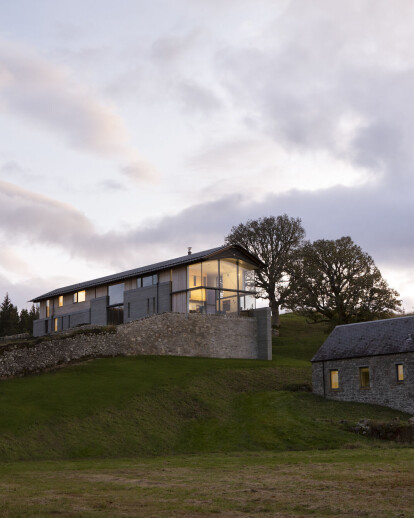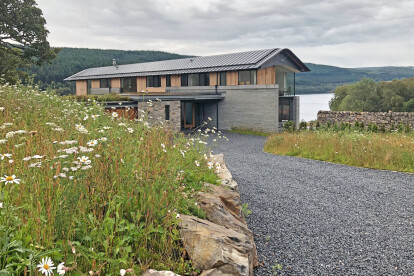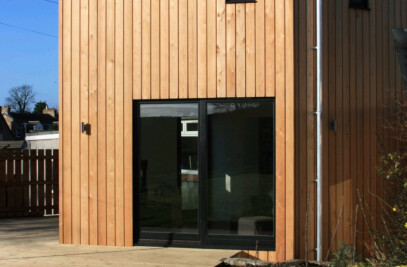Loch Tummel house sits at the feet of mighty Schiehallion gazing out along one of Scotland’s most iconic lochs. WT Architecture worked alongside an exceptional client, and a team of talented designers and craftspeople to create this remarkable estate house and converted farm steading. The new house replaces a Victorian farmhouse and outbuildings, on a site that has been an important place of settlement for many centuries. Buried into the hillside and set across three floors, the building contributes to the completion of a ruined walled garden fabled to have been abandoned incomplete by young men called up to fight in the 1745 Jacobite rebellion.


On arriving through the wooded hillside the house appears, but the long views down the loch are not revealed until you penetrate through to the heart of the house. This dramatic reveal is very much a nod to the classic country house arrangement, with a wink to the spacial defensive games of Lutyens castles. A series of arrival spaces to shed boots, coats and dogs lead through to a double height central dining hall from which all the other rooms in the house can be accessed. This dining space is the social hub of the house and spills out on to an east-facing terrace at the top of the walled garden. Stairs lead up to bedrooms, with a separate hidden stair leading up to a cabin-like study. The kitchen and an internal snug connect in to the dining hall, which also leads through to the main living space. This double height space is largely glazed and affords the most dramatic long views down the loch.

The defensive walls of the house and gardens are a mix of stone recycled from the original house, and new Caithness stone, cut as long stone bricks and laid in courses of varying thickness. Everything inside and out is highly crafted and bespoke , made by a team of skilled craftspeople and furniture makers.

This was one of the most challenging and rewarding projects the WT Architecture team has been lucky enough to work on. The clients and the design team were uncompromising in their ambition and endeavor to deliver exemplary architecture, and a beautifully built home. Houses of this scale, prominence and permanence are not often built in the Highlands nowadays and the team were conscious of the need to do it justice. Contemporary rural houses often float almost temporarily in their landscape, or bury themselves apologetically. Here the team decided to engage confidently with the landscape and the history of the site, adding to its history by completing the enclosure of the walled garden. This has given the house a sense of belonging in its landscape rather than the landscape belonging to the house.
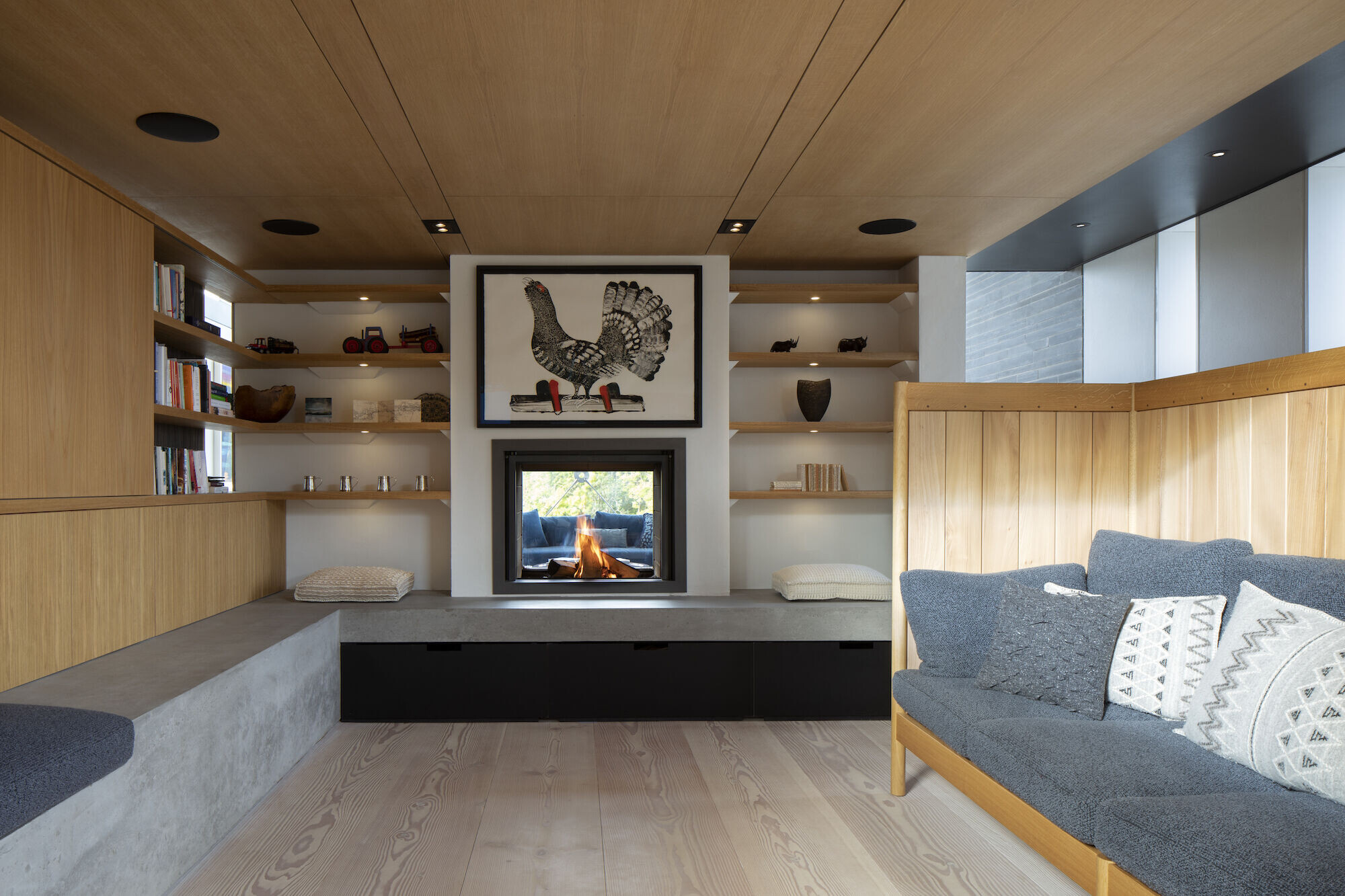
The clients have a long association with the area, and took over the small estate from family in order to create a permanent home on their return from many years living in New Zealand. Their brief was for a generous, sustainable, modern, practical and joyful home that could cater for their needs in the coming years, and importantly could be a place of gathering for their wider family. They had a clear ambition to create something special, of exemplary design and build quality, of its time and place, and worthy of its beautiful setting. What was created was a dynamic series of complex and varied spaces that form a wall to the old garden which tumbles down the slope to the loch side.

The main house has four bedrooms, an broadly open plan series of living spaces, including dining, kitchen, snug and sitting spaces, a study, and utility and storage spaces. The house has internal connections to a garage and boot room.

An adjacent set of farm buildings was also renovated as self-contained guest accommodation, with four bedrooms.
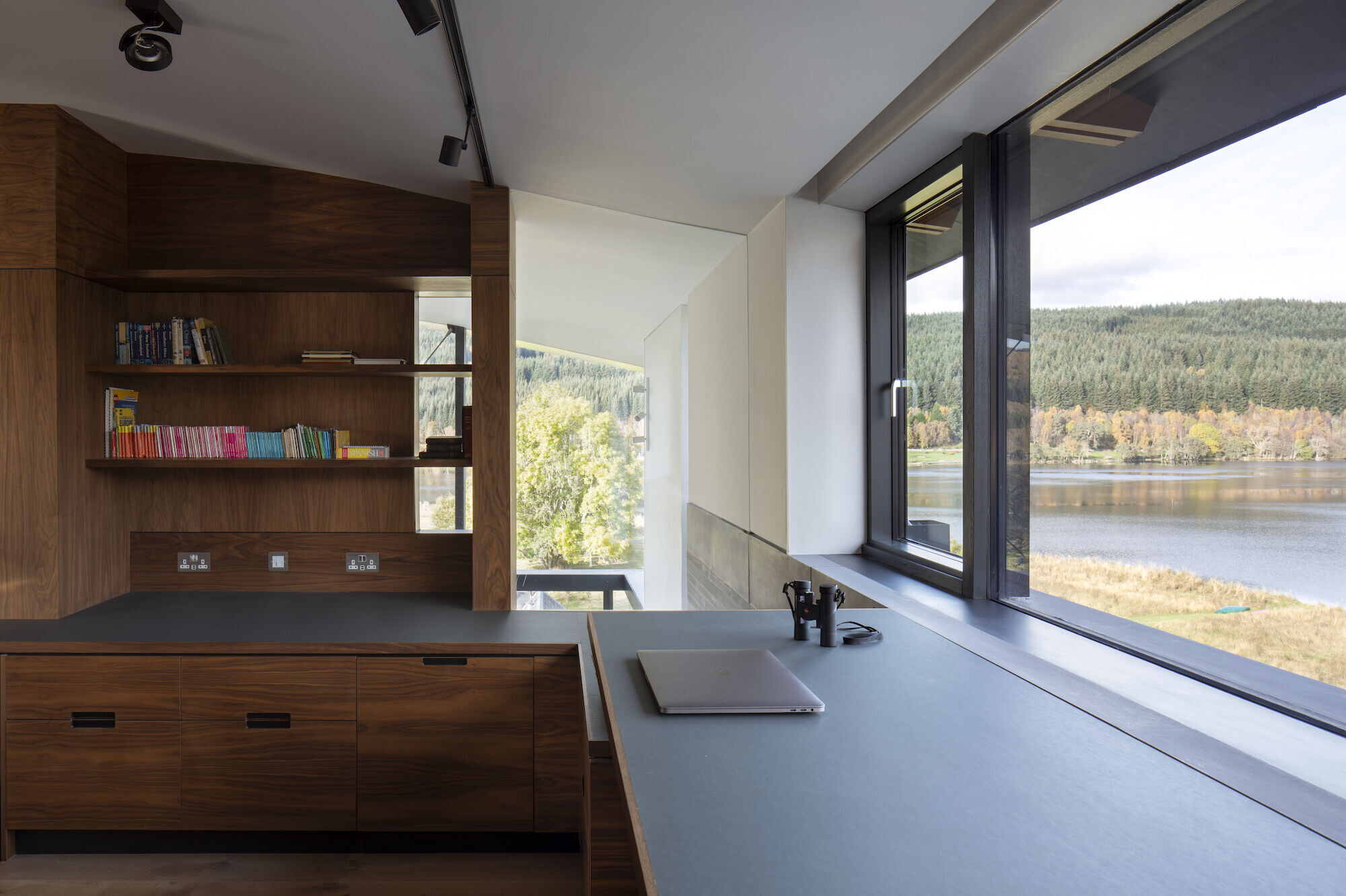
This is a prominent site in a beautiful and sensitive landscape and the proposals needed to do it justice and treat the setting with the care it deserved. The use of natural materials, the form of the building and its orientation are all fundamental to tying it in to its setting, and enhancing the context.

The house is built on a steeply sloping site which turned out to be rather unstable so the formation of the foundations and retaining walls was demanding, and took much longer than originally expected.

The harsh Highland climate puts a lot of demands on any building structure, so this needed to be robust and durable building. the extensive use of stone gives a stability and solidity to the house, with overhanging roofs providing protection to the walls under as well as pockets of outside shelter around external doorways. The house itself provides shelter to the old walled garden.

Building a house through two Scottish winters also provided challenges. Local contractors were used and rose to the challenge of learning new techniques and delivering very high quality workmanship.
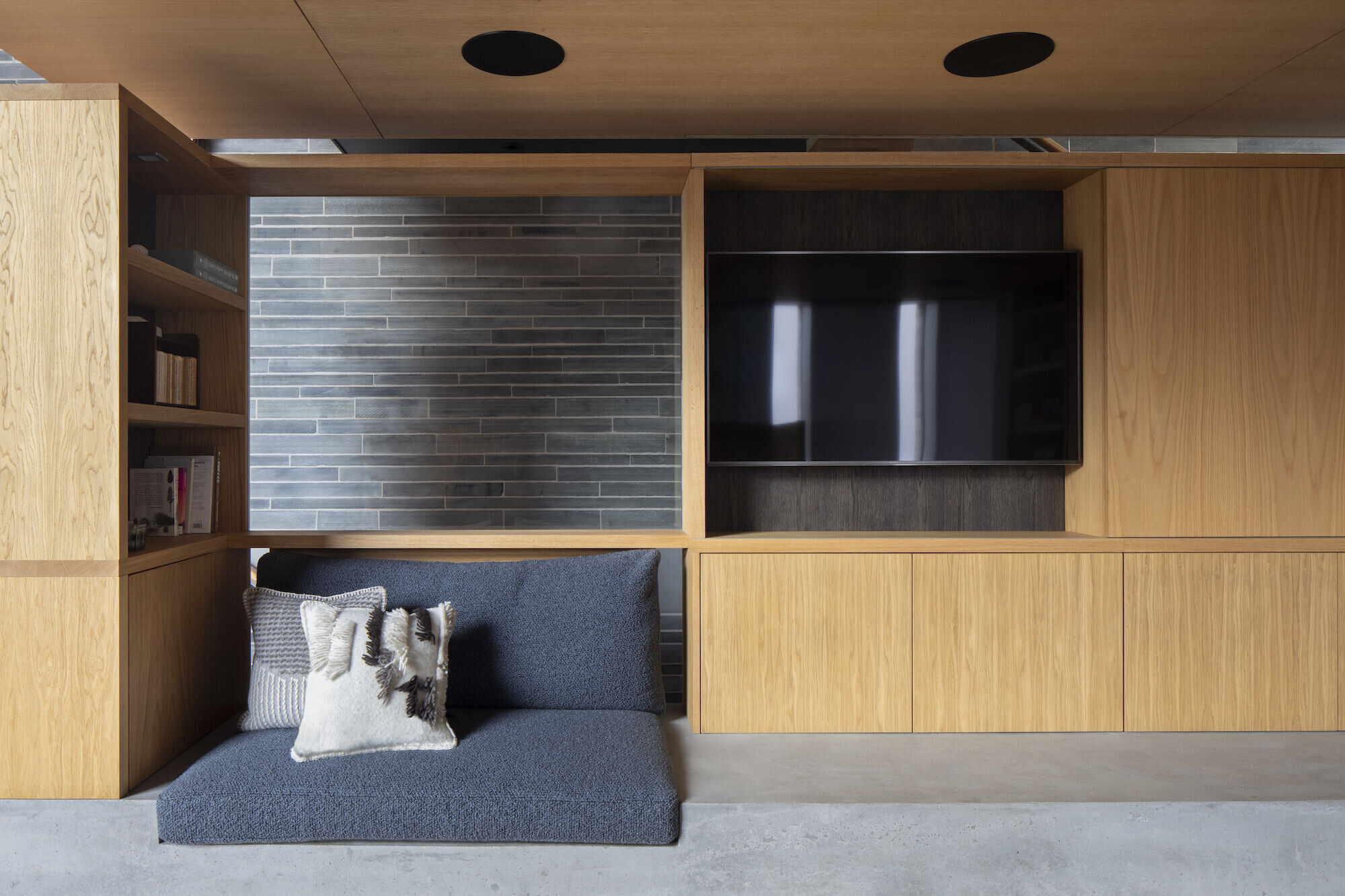
The house was detailed to provide high levels of insulation and airtightness, while the steading was upgraded to reduce its energy usage. Extensive areas of exposed internal masonry act as a thermal stores for the significant amount of beneficial solar gain, controlled by natural ventilation. Much of the masonry from the original house has been reincorporated into new rubble walls, with no spoil materials being taken off site. Biodiversity throughout the gardens and green roofs will remain important.
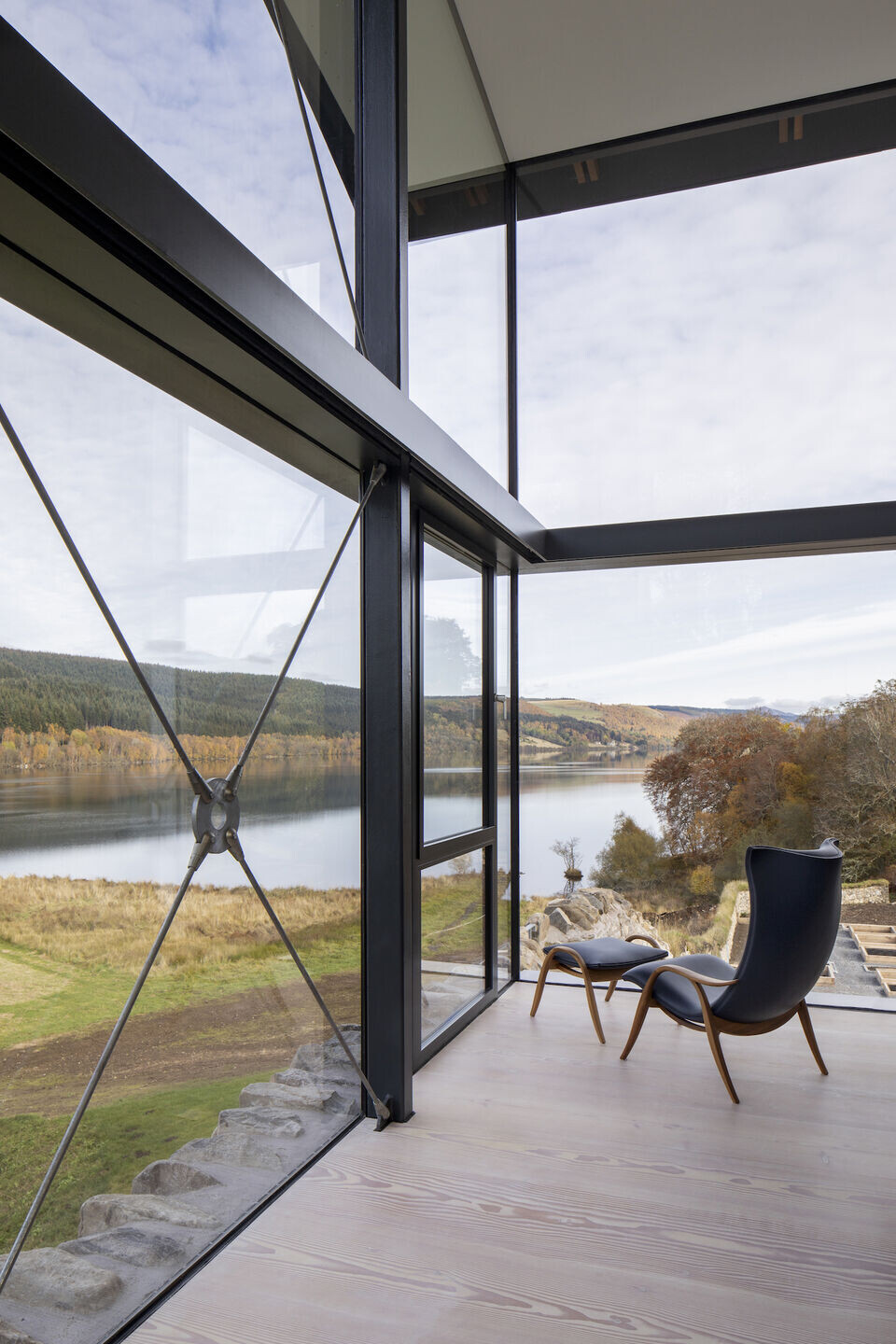
A centralised biomass boiler now provides all heating and hot water on site, replacing the oil and electric systems of the former buildings. A Highland contractor was chosen to undertake the work, staying on-site during construction to minimise travel.

Team:
Architects: WT Architecture
Principal Architect: William Tunnell
Project Architect: Thomas Fitzgerald
Structural Engineer: David Narro Associates
Quantity Surveyor: McLeod & Aitken
Photographer: Gillian Hayes, Dapple Photography

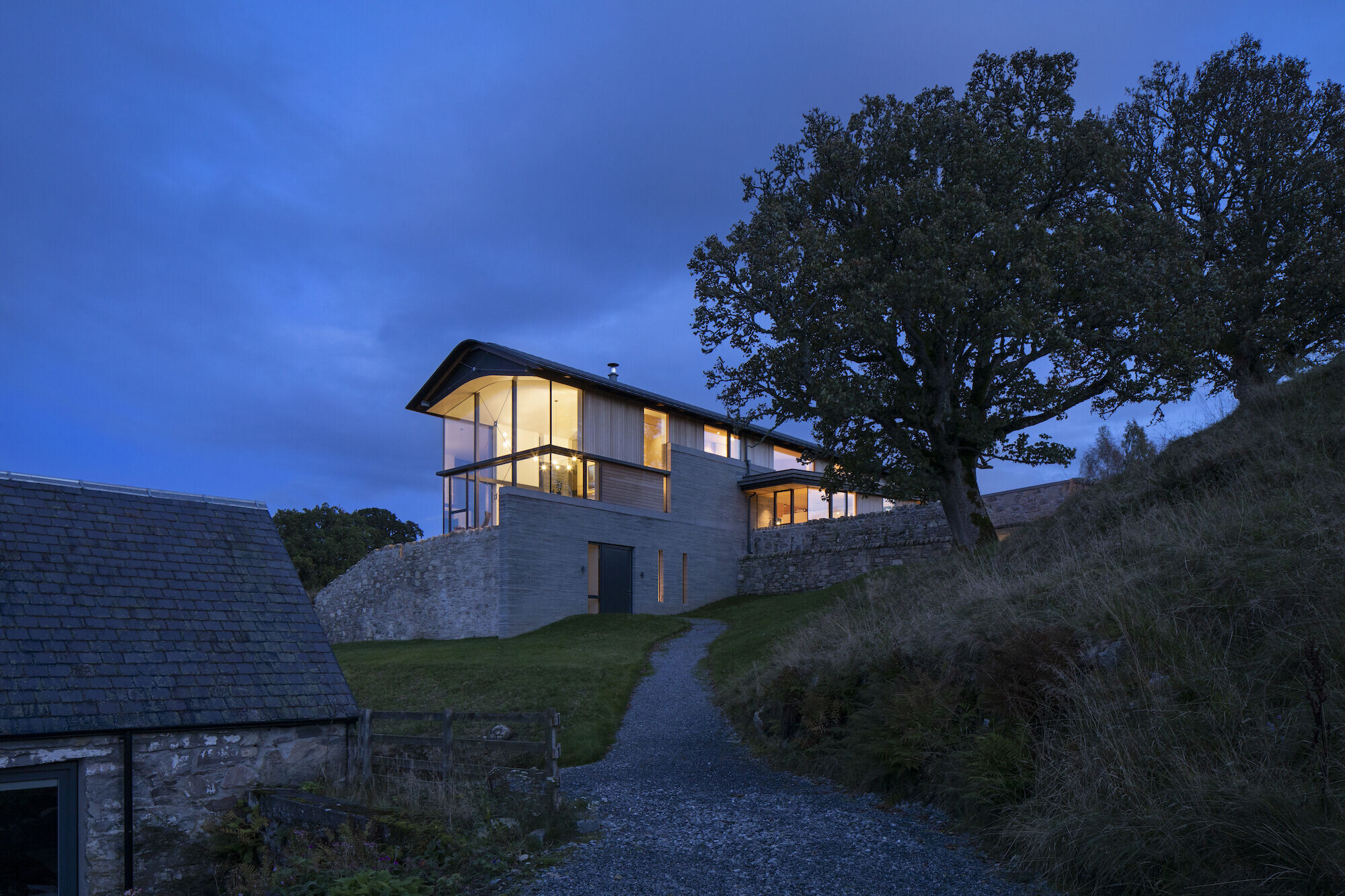
Materials Used:
Every aspect of the building is bespoke, with highly crafted materials and furniture including Caithness stone, polished concrete, steel, Douglas fir, oak, zinc and copper. Reused farmhouse stone contrasts with new Caithness stone bricks, laid in varying course heights.
Where the building is cut into the hillside, retaining walls of reinforced concrete support a deck of precast concrete beams. Above ground floor level, the house is constructed using a hybrid steel superstructure with timber framed wall panels and joisted floors. The roof uses coffered timber trusses to deliver the barrelled soffit and folded zinc outer cloak. Projecting eaves reflect Perthshire tradition and protect walls from rain in acknowledgment of patterns of increasing rainfall.
Stonework: Caithness
Roofing: Anthra and Quartz zinc by VM Zinc, and Bauder Green roof systems
Timber Walls: Douglas fir weatherboarding from Russwood
Windows: velfac for individual windows, Living room curtain glazing by iPig.
Internal flooring: Dinisen Douglas fir floor boards on ground floor.
Birkwood - fitted cabinetry including kitchen
Highland Joinery - wine cellar cabinetry
W.A. Mcgarrie and Sons - architectural metalwork
Jez Jackson - in-situ decorative concrete
Namon Gaston - snug settle
Angus Ross - dining table


